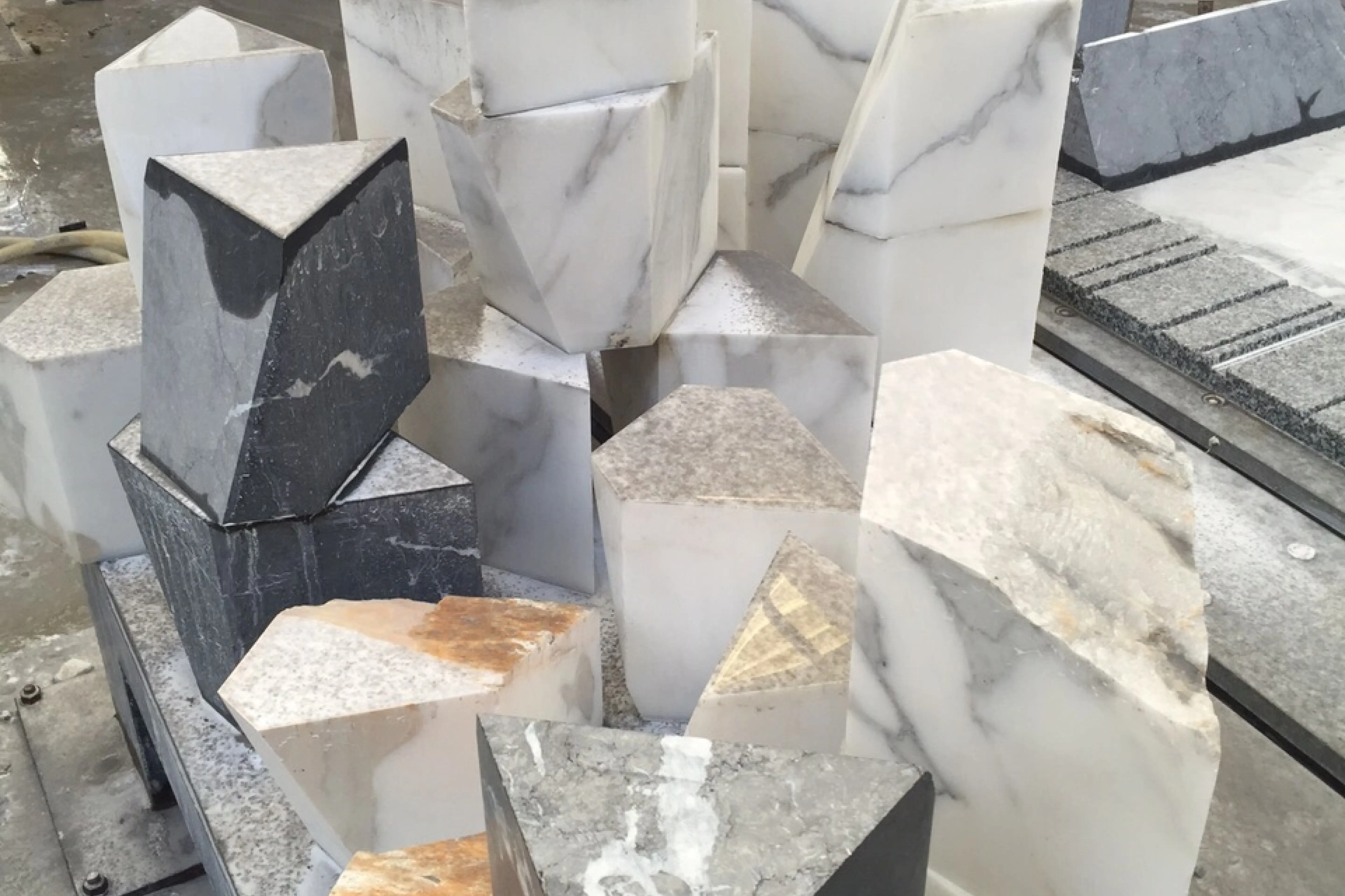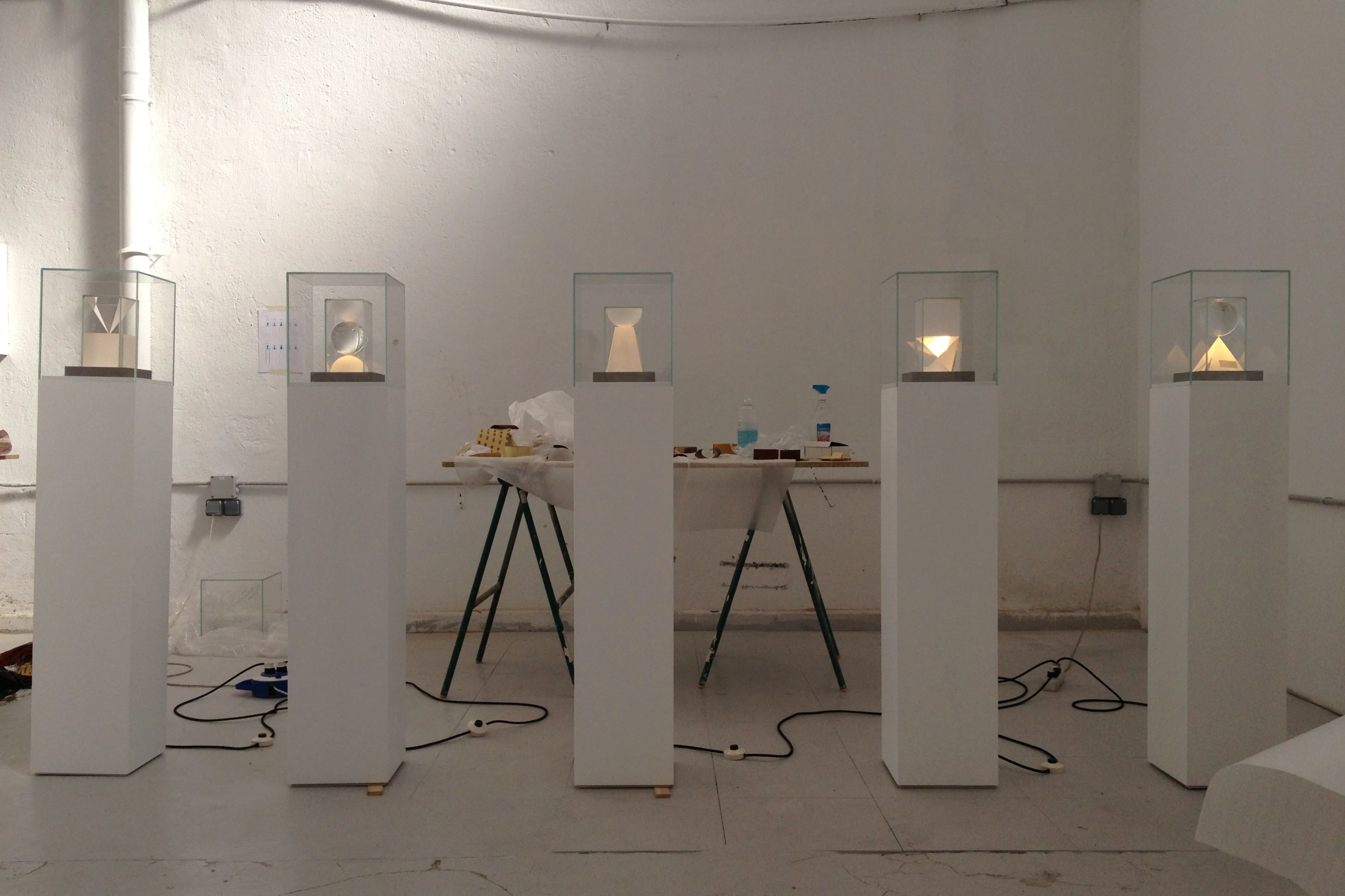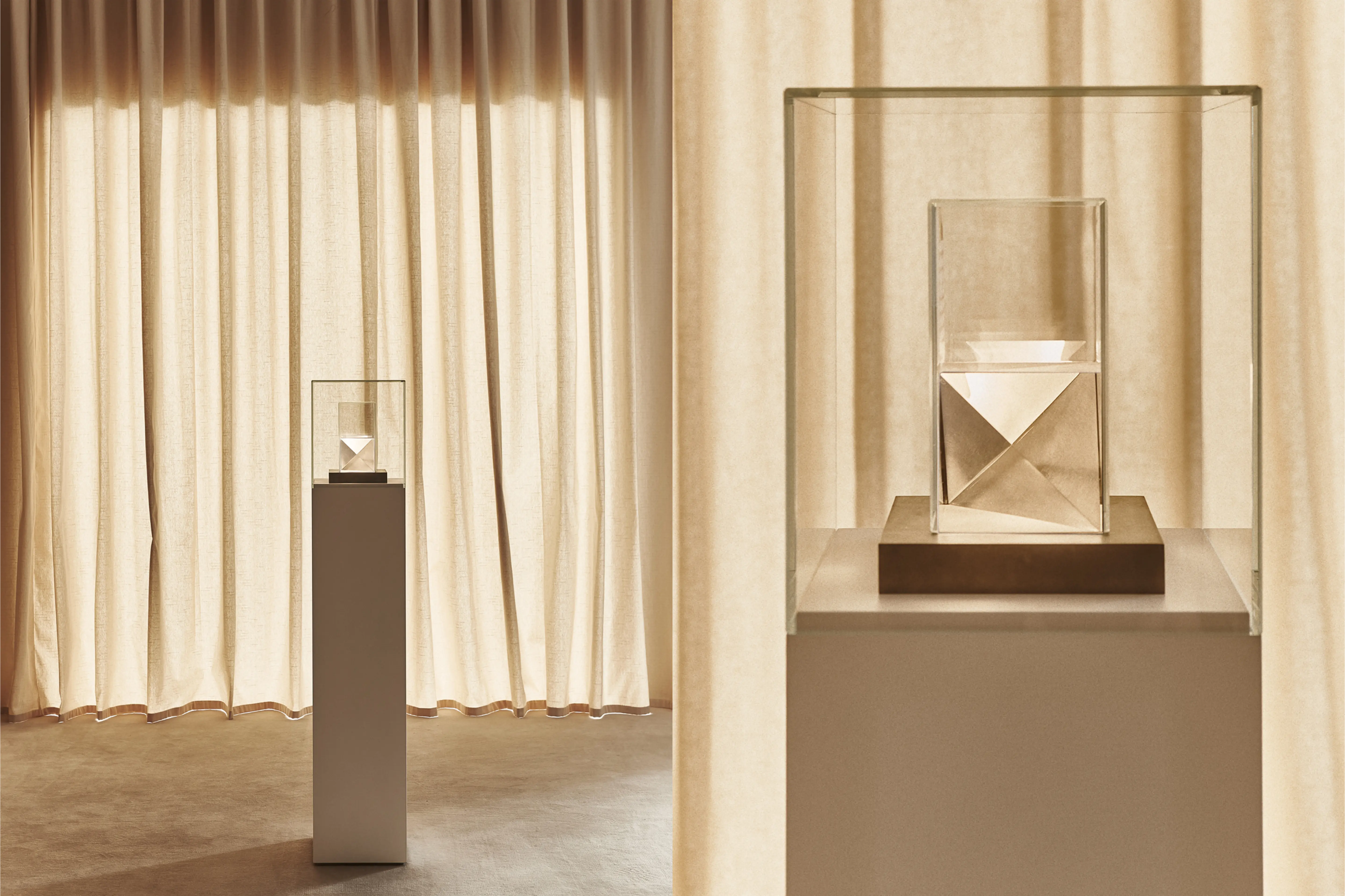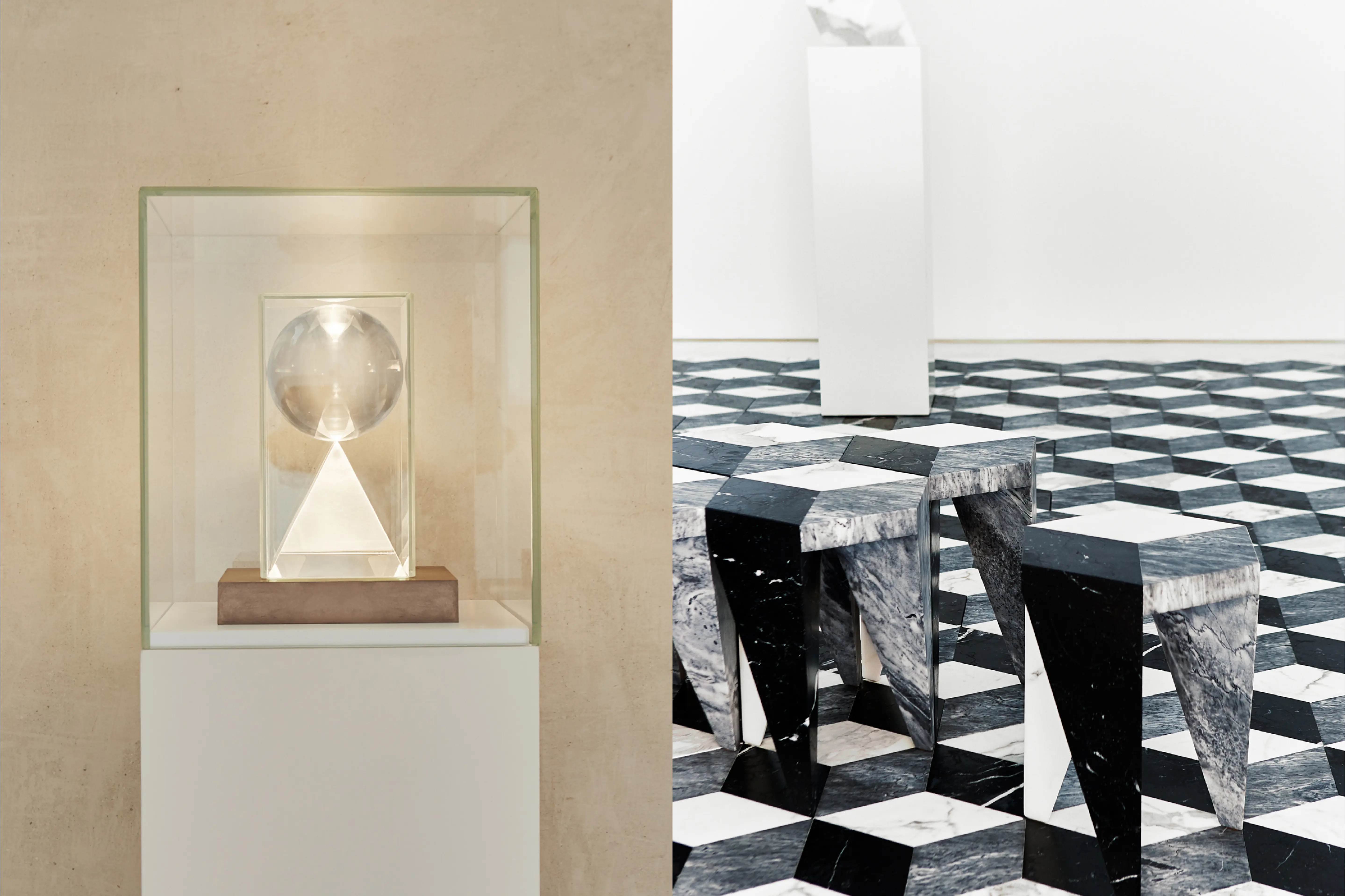
Double Game
Press ReleaseIn these projects, we were invited to transgress, to break rules, to push back borders, to operate at the edge of his discipline, and to invade the paths of art itself.
This is especially evident in the project Rayuela. The idea came from what were wooden stools with a geometric design and with the same name. These stools, grouped together, form tables with surfaces of varying size and shape, creating a geometrical grid (like the classic floors which inspired it), which, when elevated to the height of a table, give the impression of a floating floor. The pieces of discarded wood from the production always intrigued the designer: specifically, a few blocks with a triangle base but which became a hexagon. Afterwards, we made a sculpture from them, where all the lines break and then continue, where fullness and emptiness complement one another, where all the textures, rough and smooth, add value. In the new Rayuela, this time in marble, the modus operandi was reversed. First, a sculpture was made and then with the scraps, some stools were made to place around the sculpture. It is all shown on a geometric floor with a diamond design, in a kind of a total space loop.
The second project, Totem, is a group of light sculptures. It too, is a foray into the intricacies of geometry. It is based on perfect pyramids, spheres, and cubes made from transparent acrylic, of dry profiles and clean cuts. When illuminated, the light reflected produces an intriguing play on full and empty spaces, and on light and shadow, which brings us back to the realm of imagination. This aspect is reinforced by the fact that the plint itself is an integral part of the sculpture, as this is where its essence is located. In fact, here, we made another reference to my profession as an industrial designer by expressing the return of the incandescent light bulb, which is on its way to becoming a thing of the past, with a cable with a switch at the base of the sculpture.
Nothing is what it seems in these two collections, either formally or conceptually.


- Double Game Exhibition. Photo by Gonzalo Muñoz

- Making of Rayuela. Photo by ACdO

- Making of Double Game. Photo by ACdO

- Making of Totem. Photo by ACdO

- Double Game Exhibition. Photo by Gonzalo Muñoz

- Double Game Exhibition. Photo by Gonzalo Muñoz
Double Game

In these projects, we were invited to transgress, to break rules, to push back borders, to operate at the edge of his discipline, and to invade the paths of art itself.
This is especially evident in the project Rayuela. The idea came from what were wooden stools with a geometric design and with the same name. These stools, grouped together, form tables with surfaces of varying size and shape, creating a geometrical grid (like the classic floors which inspired it), which, when elevated to the height of a table, give the impression of a floating floor. The pieces of discarded wood from the production always intrigued the designer: specifically, a few blocks with a triangle base but which became a hexagon. Afterwards, we made a sculpture from them, where all the lines break and then continue, where fullness and emptiness complement one another, where all the textures, rough and smooth, add value. In the new Rayuela, this time in marble, the modus operandi was reversed. First, a sculpture was made and then with the scraps, some stools were made to place around the sculpture. It is all shown on a geometric floor with a diamond design, in a kind of a total space loop.

- Double Game Exhibition. Photo by Gonzalo Muñoz

- Making of Rayuela. Photo by ACdO

- Making of Double Game. Photo by ACdO

- Making of Totem. Photo by ACdO

- Double Game Exhibition. Photo by Gonzalo Muñoz

- Double Game Exhibition. Photo by Gonzalo Muñoz
The second project, Totem, is a group of light sculptures. It too, is a foray into the intricacies of geometry. It is based on perfect pyramids, spheres, and cubes made from transparent acrylic, of dry profiles and clean cuts. When illuminated, the light reflected produces an intriguing play on full and empty spaces, and on light and shadow, which brings us back to the realm of imagination. This aspect is reinforced by the fact that the plint itself is an integral part of the sculpture, as this is where its essence is located. In fact, here, we made another reference to my profession as an industrial designer by expressing the return of the incandescent light bulb, which is on its way to becoming a thing of the past, with a cable with a switch at the base of the sculpture.
Nothing is what it seems in these two collections, either formally or conceptually.
